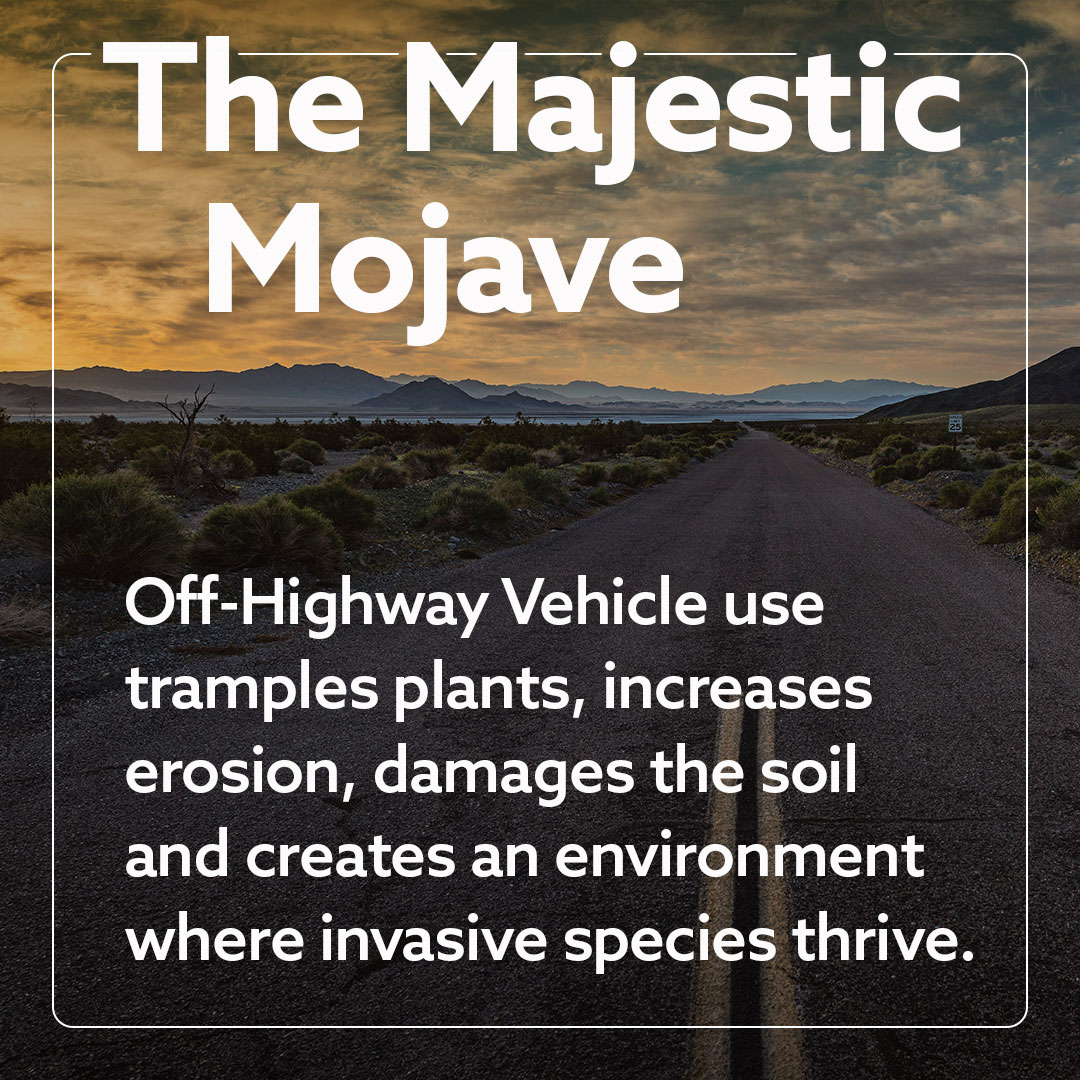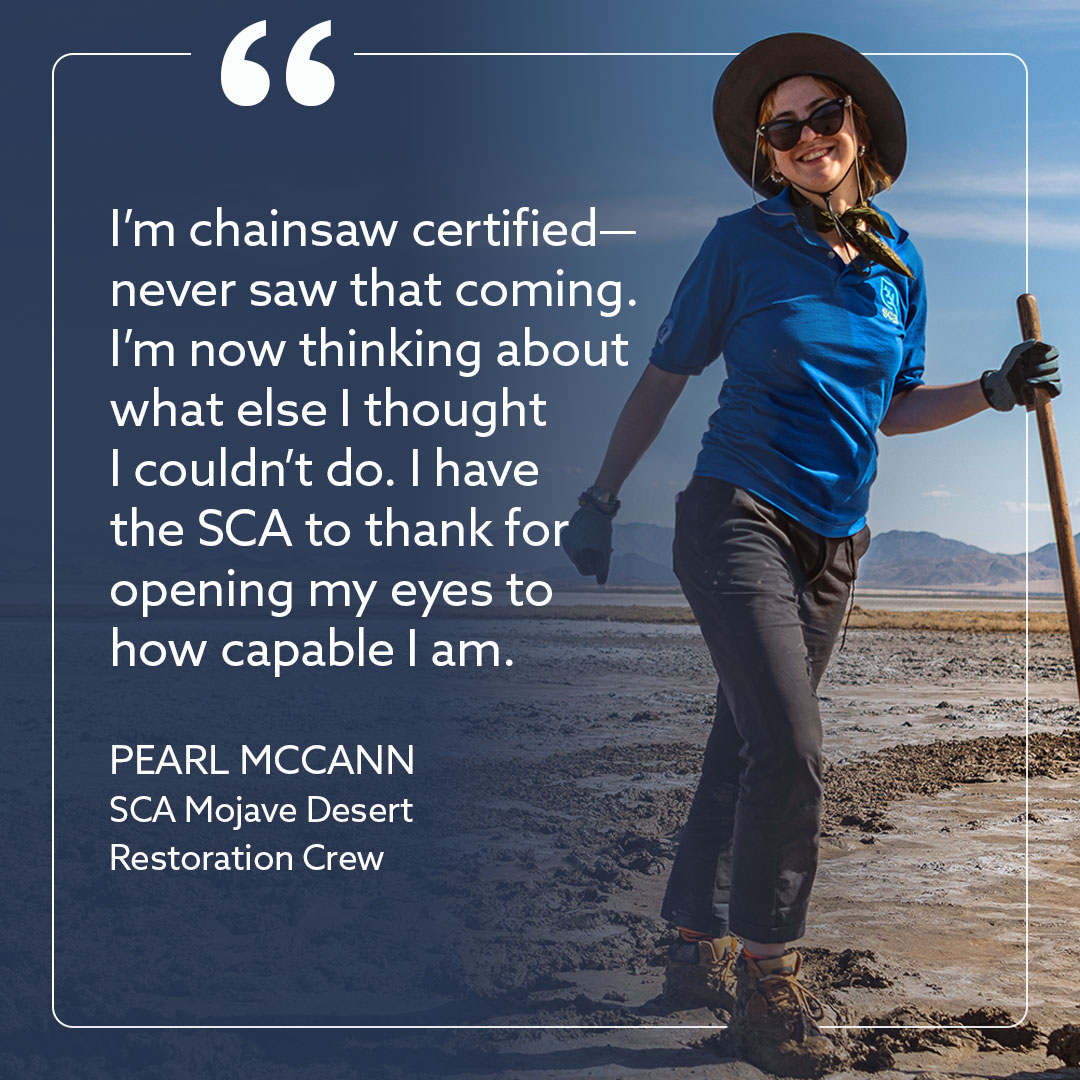At the Student Conservation Association, we are continuously inspired by our program participants’ efforts to make a difference in the world around us. This Earth Month, we are highlighting our dedicated crew members, past and present. From the Gulf Coast to the Mojave Desert, SCA participants lead the way in improving green spaces and preserving wildlife for generations to come. Read on to learn more about their work and how their experiences have a large personal impact.
Kemp’s ridley sea turtles are the smallest and most critically endangered sea turtles in the world. SCA interns have been helping protect them since the late 1970s, following in the footsteps of the program’s legendary leader, Dr. Donna J. Shaver, chief of the Division of Sea Turtle Science and Recovery.

SCA Sea Turtle Recovery Interns are responsible for assisting National Park Service staff save the Kemp’s ridley sea turtle species from extinction. Each year at Padre Island National Seashore, these interns help conduct daytime and evening turtle patrols, gather eggs, assist with caring for the eggs and release sea turtle hatchlings.

For the last decade, members of the SCA’s Desert Restoration Corps have monitored, preserved and repaired fragile habitat at the Mojave National Preserve in Southern California. The Desert Restoration Corps is one of the SCA’s most challenging programs. Small crews live and work in extremely remote locations, quickly becoming a tight-knit community.
Environmental conditions can be harsh, and the projects themselves are physically and mentally challenging, resulting in an unforgettable conservation adventure that will test their very limits.

The crew of four worked along the historic Mojave Road to reverse damage from unauthorized Off-Highway Vehicle use. This iconic road traverses throughout the Preserve and has been nominated to the National Register of Historic Places. To assist with the project, the crew led 24 volunteers who helped remove 4,000 feet of tire tracks using specialized restoration techniques.
Because of the dry and arid nature of desert climates, Off-Highway Vehicle use can trample plants, increase erosion and soil damage, and create a habitat where invasive species thrive. The crew placed long-lasting carsonite signs and metal T-posts to prevent future illegal road use.
In addition to the roadwork, the Mojave crew welcomed and educated park visitors to the Mojave National Preserve at visitor centers and roving around the park. The crew also assisted with repairing ramps for game guzzler watering holes to make it easier for the animals, such as the endangered tortoise and coyotes, to get in and out of.

Together, the crew improved 250 acres of land and 2,210 feet of shoreline across the Preserve while interacting with more than 50 visitors and collecting 358 data points, including finding 270 cultural artifacts such as rock flakes, charcoal, animal bones and an indigenous people’s obsidian half-leaf point.
The SCA’s National Conservation Crews for high schoolers offers program participants a chance to visit places they’ve never seen before and enjoy nature at its best. While working on the crew, participants live on-site in tents, cook their own meals and get to explore local outdoor recreation opportunities on non-workdays.

Last summer, the Appalachian Trail National Crew spent four weeks along mile 1,977 of the Appalachian Trail near Rangeley, Maine, in partnership with the Appalachian Trail Conservancy. The crew of six high school students worked on several projects across a two-mile stretch of trail that needed numerous stepping stones and water bar installations to prevent erosion and improve safety. In some boggy areas, the crew removed previously installed wooden log bridges that had decayed, replacing them with stepping stones that will last for decades.

The crew was nestled in the shadow of Mount Katahdin, just south of Baxter State Park in Maine, where The Nature Conservancy’s Debsconeag Lakes Wilderness Area manages nearly 500,000 acres of contiguous conservation land. Debsconeag means “carrying place,” named by the people of the Penobscot Nation for the portage sites where they carried their birch bark canoes around rapids and waterfalls. The area contains the highest concentration of pristine, remote ponds in New England and thousands of acres of mature forests.
Now through April 22, your Earth Month gift to the Student Conservation Association will be matched to help supply our crews with the tools they need for conservation projects across the country.